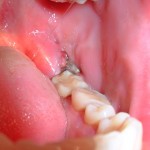
There is increasing interest in the levels of tooth wear being seen with a recent systematic review suggesting that between 10-30% of children have signs of established wear ( Dental Elf Sept 2011) . The aim of this study was to determine prevalence of tooth wear on the oral and facial surfaces in 18– 35 year olds in the general dental practice setting, across socioeconomic and demographic groups and identify potential risk factors.
A multistage, stratified sampling of the adult population, attending general practices, between the ages of 18–35 in seven European countries, Estonia, Finland, Latvia, France, Italy, Spain and UK was used. Scores from Latvia and Estonia were combined.
Standard examinations were undertaken by trained and calibrated examiners and a self-administered questionnaire was used to identify risk factors. Tooth wear was assessed using the Basic Erosive Wear Examination (BEWE ) Score; 0–3 ordinal scale (0 = no wear, 1 = early surface loss, 2 = surface loss < 50%, 3 = surface loss > 50%). each individual was 126 characterized by the highest BEWE score recorded for any scoreable surface.
- 3187 adults were recruited from 7 countries (Estonia 122; Finland 344; France 700; Italy 675; Latvia 342; Spain 304; United Kingdom 700)
- 1368 (42.9%), had a BEWE score of 0;
- 883 (27.7%), had a BEWE score of 1;
- 831 (26.1%) had a BEWE score of 2;
- 105 (3.3%) had a BEWE score of 3.
- There were large differences between different countries with the highest levels of tooth wear observed in the UK.
- Important risk factors for tooth wear included heartburn or acid reflux, repeated vomiting, residence in rural areas, electric tooth brushing and snoring.
The authors concluded
This study showed that facial and oral tooth wear in adults aged 18–40 years was common and affected more than 25% of this adult population. Regular consumption of fruit, repeated vomiting increased the association with high levels of tooth wear.
Comment
As tooth wear tends to increase with age that fact that almost 30% of this population could have an important impact on oral health and service provision for the future.
Links
Bartlett DW, Lussi A, West NX, Bouchard P, Sanz M, Bourgeois D. Prevalence of tooth wear on buccal and lingual surfaces and possible risk factors in young European adults. J Dent. 2013 Sep 1. doi:pii: S0300-5712(13)00222-4. 10.1016/j.jdent.2013.08.018. [Epub ahead of print] PubMed PMID: 24004965.
Bartlett D, Ganss C, Lussi A. Basic Erosive Wear Examination (BEWE): a new scoring system for scientific and clinical needs. Clin Oral Investig. 2008 Mar;12 Suppl 1:S65-8. doi: 10.1007/s00784-007-0181-5. Epub 2008 Jan 29. PubMed PMID: 18228057; PubMed Central PMCID: PMC2238785.

“@TheDentalElf: Study shows that tooth wear was present in around 30% young European adults http://t.co/J1xeLcN9hK”